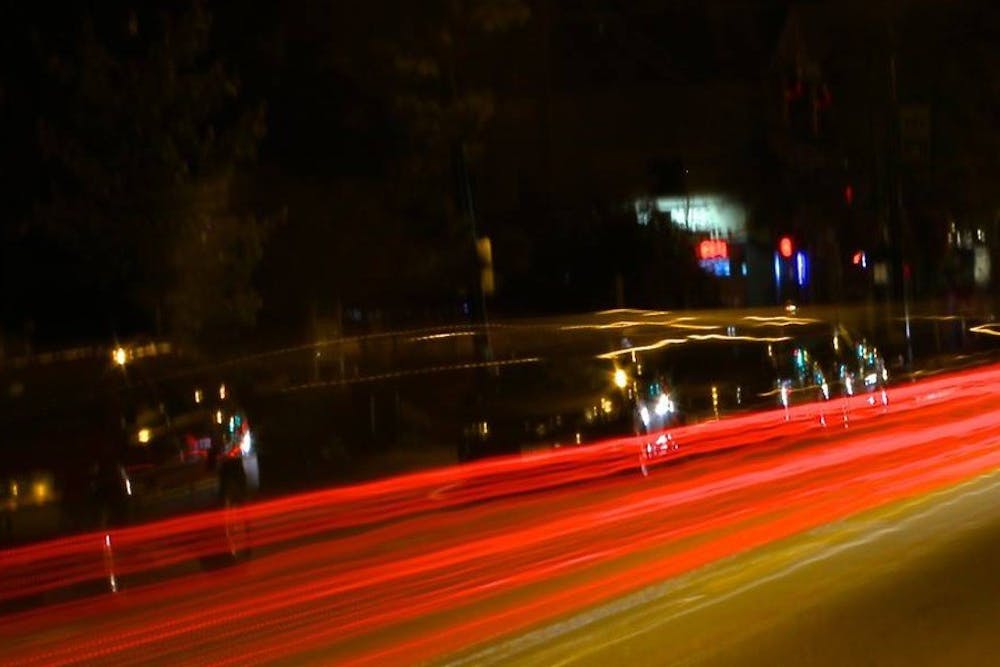Uptown night lights.
Photo by Connor Moriarty
By Jenna Tiller, For The Miami Student
The new traffic signals installed near Bachelor and Shideler Halls this summer, though much safer for pedestrians, have caused an uproar among students.
Vincent Cirrito, the project manager of the new traffic light systems, said the main goal of the project was to make the intersection safer - an especially necessary change with the opening of the new Western Campus residence halls.
"We wanted to make sure this crossing was as safe as we can make it for the students - our top priority," Cirrito said.
The biggest departure from previous years is there is a period for pedestrian traffic only, as evidenced by the new "No Turn on Red" signs. This allows pedestrians to cross freely at all intersections simultaneously without any vehicle traffic.
Additionally, Cirrito said the new lights are hooked up to a backup generator in Bachelor Hall, so if the power were to go out the lights would continue to function.
Although the intersection sounds safer in theory, many students have not found this to be true. The interval between pedestrian traffic crossings lasts so long that many students have started crossing between them, regardless of traffic signals. With only 10 minutes between classes, students feel rushed to cross the street.
"There are times between the pedestrian crossing times when there is no traffic in one part of the intersection and it is safe to cross," sophomore Jesse Via said. "But there are others when there is a left turn signal we can't see, but we just walk anyway because we only have 10 minutes of passing time [to get to class]."
Sophomore Liz Dejohn also had complaints about inefficiency.
"It creates a lot of congestion," she said. "There are times when you can go when you're not supposed to, like when a lane on the opposite side of the intersection has a left turn light."
Cirrito, however, claimed the intersection is currently working as planned, and urged students to follow the "walk" and "don't walk" signals for their own safety.
Enjoy what you're reading?
Signup for our newsletter
"The amount of time provided for the pedestrian 'walk' and flashing 'don't walk' is set using state and national standards," he said. "While there are a few times in the cycle when an able-bodied pedestrian can cross, we cannot provide the 21 seconds of [walking time] that are required by law. Therefore, we cannot have additional walk intervals at other times without increasing wait times for all users."
Cirrito said that, like any new technology, there is an adjustment period to work out all the tweaks.
"Changes of this magnitude always take time to get used to," he said. "We needed to find the right timing mix for motorists … and pedestrians … two competing interests. [We will] continue to monitor the intersection to make sure our students have a safe intersection to cross through."




